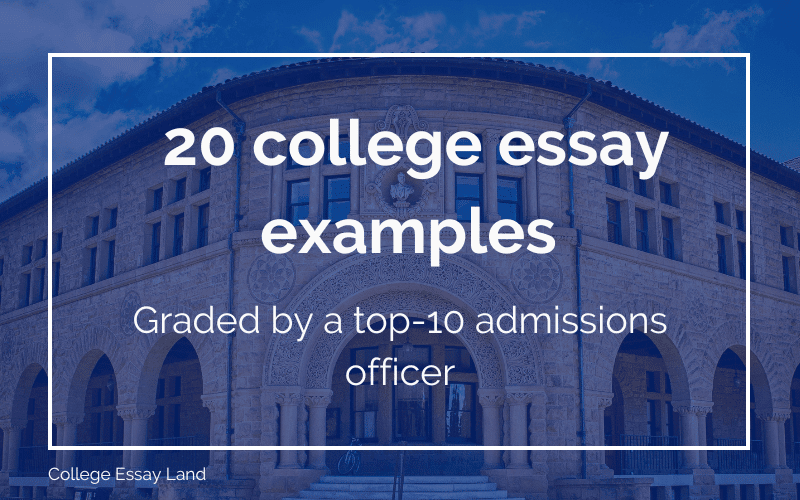Contents
Last updated March 21, 2024
Every piece we write is researched and vetted by a former admissions officer. Read about our mission to pull back the admissions curtain.
How to Get into Stanford
Admissions officer reviewed by
Ben Bousquet, M.Ed
Former Vanderbilt University
Written by
Kylie Kistner, MA
Former Willamette University Admissions
Key Takeaway
Let’s be real. Stanford needs no introduction. As one of the most prestigious intuitions in the entire world, it also has one of the lowest acceptance rates. It’s currently sitting at about 3.95% and shrinking by the year.
To get in, you have to be lucky. More importantly, you have to be prepared. And more, more importantly, you have to be strategic.
In this guide, I’ll tell it to you straight: getting into Stanford is really hard. But I’ll also show you how to level up each major part of your application with an application strategy that will make you stand out to Stanford admissions officers.
Here we go.
How to Apply to Stanford
You can find Stanford on the Common Application. They’re also a QuestBridge partner, but the vast majority of applicants will submit a Common App application.
When you apply, you’ll need to prepare a bunch of materials, including:
- Common Application, including your background information, activities list, and personal statement
- Stanford supplement
- High school transcript
- School report
- Counselor recommendation
- Two teacher recommendations
- Standardized test scores (though Stanford is currently test-optional)
Stanford Application Options
When you apply through the Common App, Stanford will ask about your application plan. You’ve got two options: Restrictive Early Action or Regular Decision.
Like Harvard, Stanford’s REA application option is like “Early Decision”-Lite. It doesn’t bind you to attend Stanford if you’re admitted, but it does restrict your early application options. If you apply REA to Stanford, you’re not allowed to submit any Early Action or Early Restrictive Action applications to any other private university in the country. You’re also not allowed to apply Early Decision anywhere.
Because Stanford’s REA is, well, restrictive, it may not be the right option for you. If so, you can apply Regular Decision, which is the application plan that most applicants choose.
Stanford Application Deadlines
Restrictive Early Action: November 1
Regular Decision: January 5
How hard is it to get into Stanford?
Dear reader, it’s almost impossible. I don’t say that to break your spirit. I say it to set your expectations. Every year, tens of thousands of the world’s most qualified high school students get rejected from Stanford. No matter how hard you try, you’re statistically likely to be one of them.
With an acceptance rate below 4%, it comes down to the math. There’s just not enough seats at Stanford for all the amazing applicants. To make it into the admit pile, Stanford admissions officers have to see something special in you.
What does Stanford look for in applicants?
So what, exactly, will make you seem special to a Stanford admissions officer?
First, you have to lay the groundwork. If you don’t have the requisite grades, course rigor, and activities, you’re probably not getting in. I’ll cover what good grades, rigor, and activities look like in the coming sections, but for now, know that you’re up against the best of the best, so you’ll have to have the stats to compete. Don’t blame the messenger!
Now that that’s settled, let’s talk about what you can do to set yourself apart. To truly stand out, you’ll need need to demonstrate an unmatched level of intellectual vitality and extracurricular excellence. Across your application, Stanford wants “to see the energy and depth of commitment you will bring to your endeavors,” whatever those endeavors may be.
“Intellectual vitality” is a lot like academic excellence or intellectual curiosity. It signals to your Stanford admissions officer that you’re not just applying for the degree. You’re applying because you have genuine intellectual contributions to make to the Stanford community and maybe even the world.
It can be difficult to convey such intellectual depth through a college application alone. That’s why your transcript, activities, recommendations, and essays are so crucial—they “show” admissions officers exactly what you “tell” them about you.
Remember that your entire application is actually a covert marketing campaign. Each piece needs to seamlessly cohere with the others to paint an authentic but strategic picture of what you bring to the table.
The key to leveling up your Stanford application is to align your marketing campaign with Stanford’s evaluation criteria. We’ve already covered the basics of those criteria in our Stanford Common Data Set post, so here I want to focus on values.
Values should be at the heart of every application you write, but especially your Stanford one. By connecting your killer grades and extracurriculars to Stanford’s core values, you can show that you aren’t one of those other 96% of applicants. You’re in that special 4%.
Take a look through Stanford’s values statement. What are some key words you notice? Here are a few that drew my attention: innovative solutions, curious people, applying knowledge, ethics, access, community partnerships.
Writing about your own values and strengths—academic and otherwise—in light of these institutional values can set your application apart.
Stanford GPA requirement
Okay, with that more philosophical approach out of the way, let’s get down to brass tacks. Technically, there’s no GPA requirement to apply to Stanford. Anyone is welcome to submit an application.
But if you want to actually be admitted, you’re going to need a Stanford-worthy GPA.
Of all the enrolled first-year students, three-quarters—a whole 75%—had a perfect 4.0 in high school. Of those who reported class rank, 96% were in the top tenth of their graduating high school class.
To join the ranks of Stanford students, you’ll need the GPA to match.
Stanford SAT Scores
Although Stanford is currently test-optional, we know from the Stanford Common Data Set that test scores are a very important part of their application evaluation process.
So how does that work?
If you choose to submit them, they can have a big influence on how admissions officers understand your academic fit for Stanford. If you don’t submit them, you probably won’t be penalized, but you won’t get that bump in perception, either.
To find out if your scores are up to par, let’s take a quick look at Stanford’s middle 50% ranges:
SAT Composite: 1470-1560
ACT Composite: 34-35
There’s a lot of strategy that goes into test-optional decisions, so check out our test-optional strategy post for more advice about whether you should submit your scores. But in general, your scores should be within these ranges to be competitive. If you want to be really competitive, they should be at the upper end or above them.
Does Stanford superscore?
“Superscoring” is what we call it when institutions take your best subsection scores, even if you earned them on different test dates, and combine them to make one “superscore”—your very best possible score.
And yep—you’re in luck. Stanford will superscore your SAT, and they’ll pay attention to your highest ACT subsection scores. That can be a huge help to your application, especially given that test scores are “very important” to Stanford admissions.
What high school coursework do I need to get into Stanford?
Succeeding in spite of a challenging courseload is one of the best ways you can strengthen your Stanford application. In fact, it’s pretty much a prerequisite.
Stanford recommends that you take about five core subject classes each semester, excel across different subject areas, and select a rigorous courseload given what your school offers.
Beyond those guidelines, here’s Stanford’s recommended breakdown for your academic pathway:
- 4 years English
- 4 years math (calculus and statistics are recommended)
- 3+ years history or social studies
- 3+ years of lab science
- 3+ years of a foreign language
Your schedule doesn’t have to look exactly like that, so don’t worry if it’s not possible to meet every criterion at your school. What’s most important is that you’re challenging yourself across the curriculum, earning good grades, learning a lot, and developing strong academic skills.
What extracurriculars do I need to get into Stanford?
From bell hooks to Issa Rae to Charles Schwab, Stanford knows how to select students who will have a huge impact on the world around them.
Apart from your academics and essays, the best way to show admissions officers that you’re at that level is through your extracurriculars.
When it comes to your extracurricular activities, Stanford looks for what most other highly-selective institutions look for: students who have demonstrated a depth of involvement and a strong impact. What specifically you do doesn’t matter as much as why (and how well!) you do it.
Stanford is explicit about the fact that they aren’t just looking for the student who takes on twenty extracurriculars, so don’t go loading up on clubs just for the sake of filling up your Common App activities section.
Instead, think about your application narrative. Remember your marketing campaign? Your activities should be like the advertisements that bring the campaign to life by illustrating for consumers (AKA your admissions officer) what it is that you’re selling. The brighter, flashier, and more robust, the better. We call that extracurricular magnitude and impact. But that’s not the only way to grab an admissions officer’s attention.
Most important of all is the cohesiveness. Your activities should round out your application to show an admissions officer that you’re already making a difference in your community. And you don’t have to be a certified high school NASA engineer to do that. Even activities like preparing dinners for your family or watching your siblings, when written with intent, can show that you’re the kind of do-er who belongs on an alumni list alongside all the others.
Final Takeaways + Stanford Supplemental Essays
Applying to Stanford is almost always a shot in the dark. But for that 4% of students, the effort pays off tenfold. Bulking up your application with solid strategy can help you make your case and give your application a fighting chance.
With all of these strategy guidelines in mind, give your own application strategy a go. And when you’re ready to get started on your Stanford supplemental essays, we’re here to help. Stanford’s supplemental questions are among the most difficult to answer, so we’ve broken our advice up into a separate Stanford Supplemental Essay guide. See you there!



